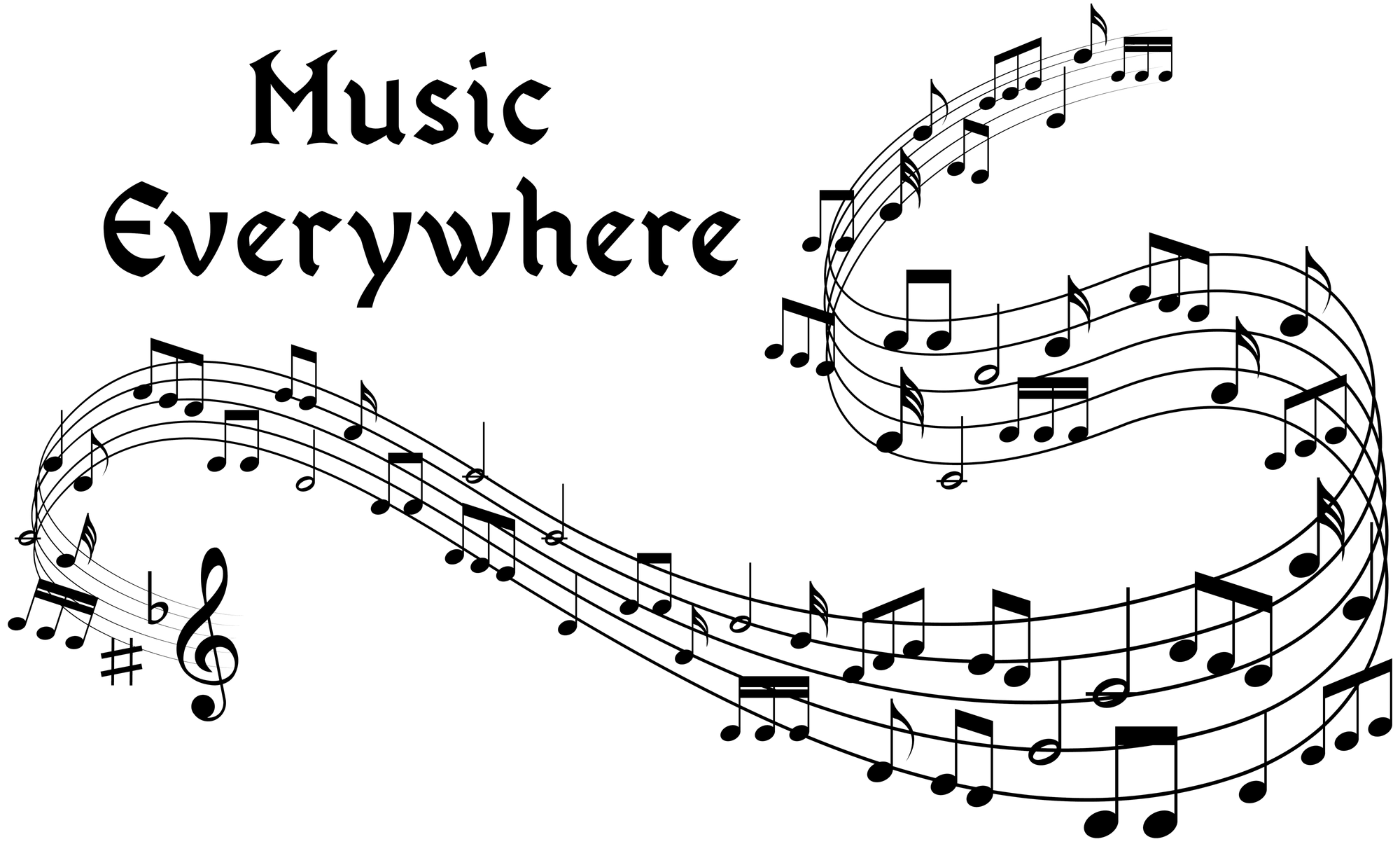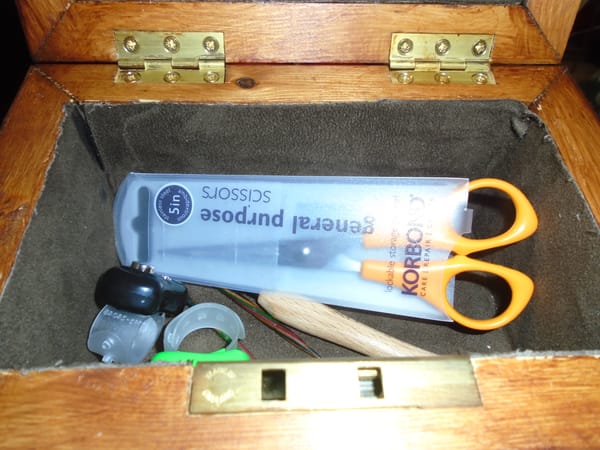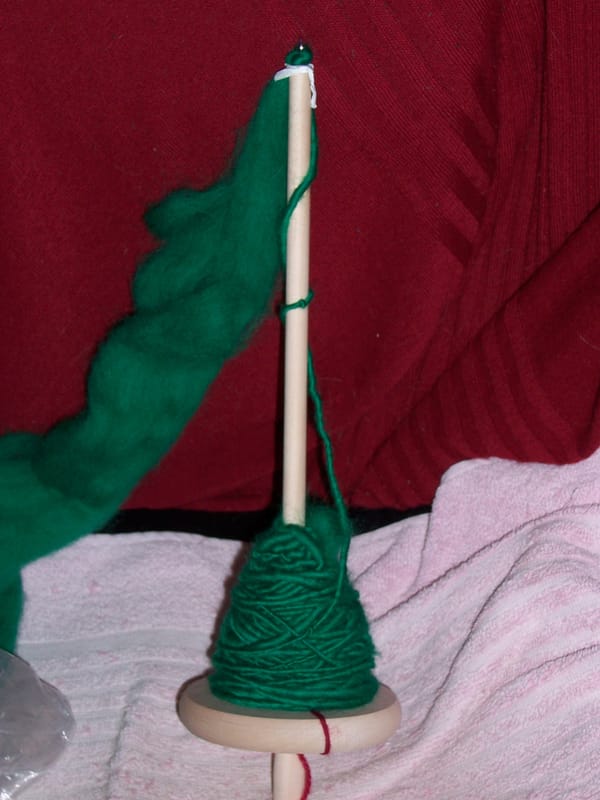A knotty question

I used to do quite a lot of Celtic knotwork; some of it even went on that cake I mentioned, the one that was a prize in the church raffle all those years ago. I had books on the subject. You see, I write poetry myself as well as translating other people's, and if you're going to present a poem it's quite nice to use a calligraphic technique for the body of the text and give it an illuminated initial capital, plus maybe a border, depending on the length of the poem. (A border can be a bit much for a longer one, but it's a matter of taste.) I used to have a prison penpal who really loved poetry, so I sent him a few of mine, suitably illuminated, and I seem to remember I also had them laminated so they'd be fine if he spilt his coffee on them. I also sent him a volume of Keats, which led to a rather strange conversation with one of the prison officers. I wanted to know if it was all right to send him a volume of Keats, and the officer wanted to know what a Keat was. I think it's fair to say I've never been asked that before or since. (For reference, if you are ever in the same position, the rule is that it's all right to send books as long as they come straight from the seller; you buy them online and get them delivered to the inmate.)
But the books, and all the remaining knotwork, vanished in 2016 along with almost everything else, so I thought, right. I want to talk about knotwork in this post, so I'll do what I usually do and look online for sites that tell you how to do it.
Now, I'll grant you, I was already ruffled. Suffice it to say I've had reason to read the Makin Report; I am close to not one but two people who were at Winchester College, and one of them was there during the period that the abuse took place there. I don't know if he was affected personally but I am definitely not in a good way at the moment, so I was not exactly prepared to deal with complications, even over such a neutral subject as Celtic knotwork. Nonetheless, complications were what I got; so I hope this post is reasonably coherent.
Every website gives you a different method.
The way I learnt to do it concentrates on the negative space, in other words the areas between the lines of knotwork (which are very often small diamonds). You drew a grid of dots as if you were going to create a zhostovo border, you pencilled in your little diamonds around some of the dots, and you worked up the lines from there. The closest thing to that I was able to find online is WikiHow; that uses a fairly similar method but starting from a square grid. I would say, from experience, that all you really need is the dots. You don't need an entire square grid. You can use one, of course, but if you do you'll just be erasing (or painting over) the gridlines later.
Instructables, which has probably the clearest set of instructions I've found, also uses a square grid, but doesn't say anything at all about the negative space. I think that if you're interested in learning to do it, this is probably the one to start with; you could practise on squared quilting paper or something with a similarly sized grid, and once you're more confident go on to marking up your own grid of dots. The feature photo above comes from this site. (It's a lovely design, but I personally wouldn't have used a ball point; having said that, I wouldn't use a ball point for anything other than marking out the cutting line on Sibyl's base plate, which won't take a rollerball, so I may be a little biased.)
And then there's Clanbadge. This is even worse from the point of view of initial complication, because he's using diagonal lines on top of a square grid; but then he is thoroughly biased and freely admits it. He's designed a nifty little knotwork font (of course, he has a download link for it), and he wants to show you just how slow and complicated it is to do knotwork by hand so that you'll run off to buy his font. All well and good; yes, it's a really useful tool if you plan to do knotwork on the computer, but if you're putting together a book of poems (unless you're binding it yourself) it's not going to be much good to you. And even if you are working on the computer, it's of very limited use if you don't have a printer, which I for one don't. I need to print so rarely that when I do, I just ask someone at church. Such a font could, of course, be useful as a way to get an initial feel for what your finished design is going to look like; but I can generally do that from a rough sketch, so, much kudos to him for a highly ingenious idea, but I won't be buying it.
Finally, there's Calligraphy Skills, which looks like a pretty good site all round if you're planning that ornate poetry collection; it covers all the skills you might need, up to and including goldwork. (I've never done that for a number of reasons, contenting myself with a fairly decent imitation using metallic gold acrylic paint.) Their technique is different again, and I find it rather interesting because it's the nearest thing I've seen to cable knitting... which is, after all, basically knotwork done in yarn. While the numbers and types of stitches may vary considerably, there are really only two types of cable: you cross your stitches either at the front (top left to bottom right diagonal over bottom left to top right) or at the back (the other way). And this is essentially what the Calligraphy Skills site is doing with knotwork. They're working with the intersection as their basic unit, and it crosses either one way or the other.
So, there you have it. There's no One True Way to do knotwork; you can pick whatever method works for you. Whichever way you choose, it's not quick, but it is remarkably therapeutic. And, as the Instructables writer pointed out, you don't actually need any artistic talent to produce something really beautiful... which suits me, because I have none! (I can draw, but it takes a lot of time and hard work. I will never be one of those people who can dash off a few adroitly-placed lines and everyone says "oh wow, that's a great likeness".)

See? I'm never going to be the world's greatest artist (I'm good at hair, but that's because I am really patient). A bit of an aside, I know, but I need a smile right now and possibly you do too.
Actually, I should really revisit this. He could do with a bit of knotwork on his axe blade, don't you think?




